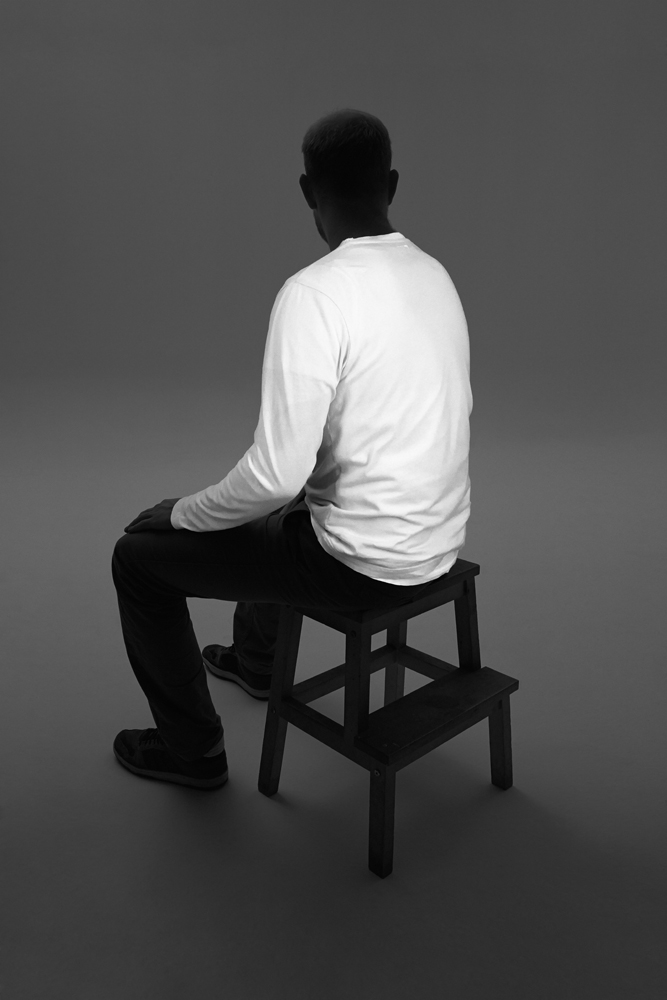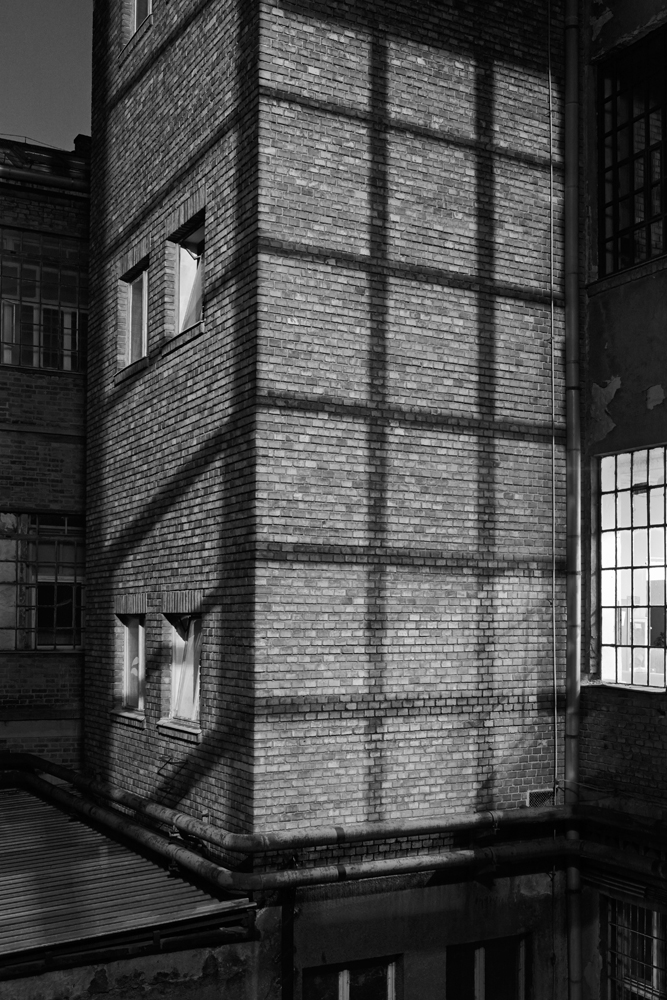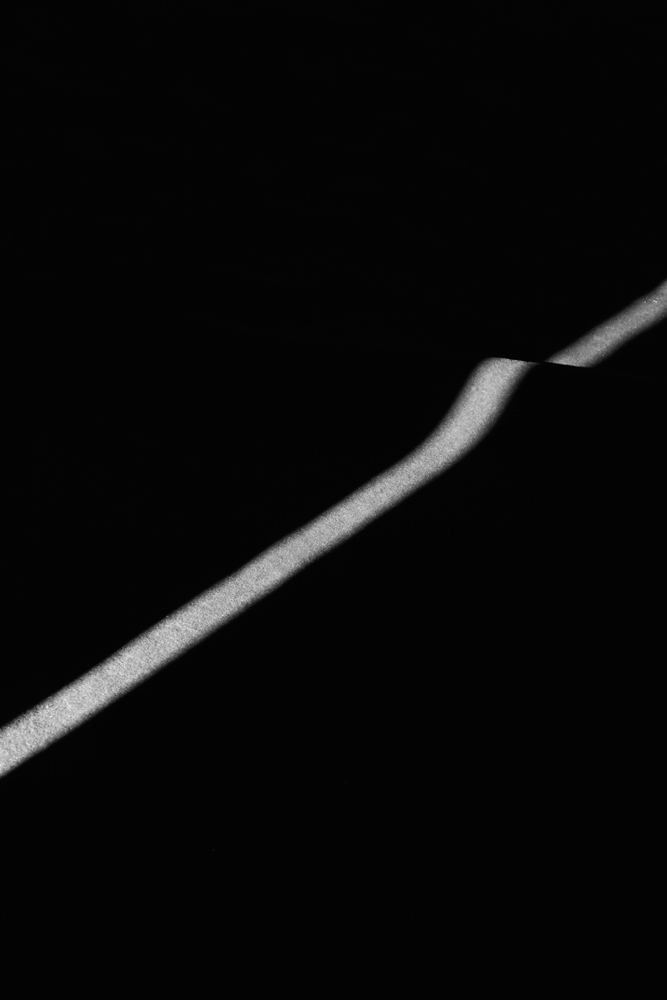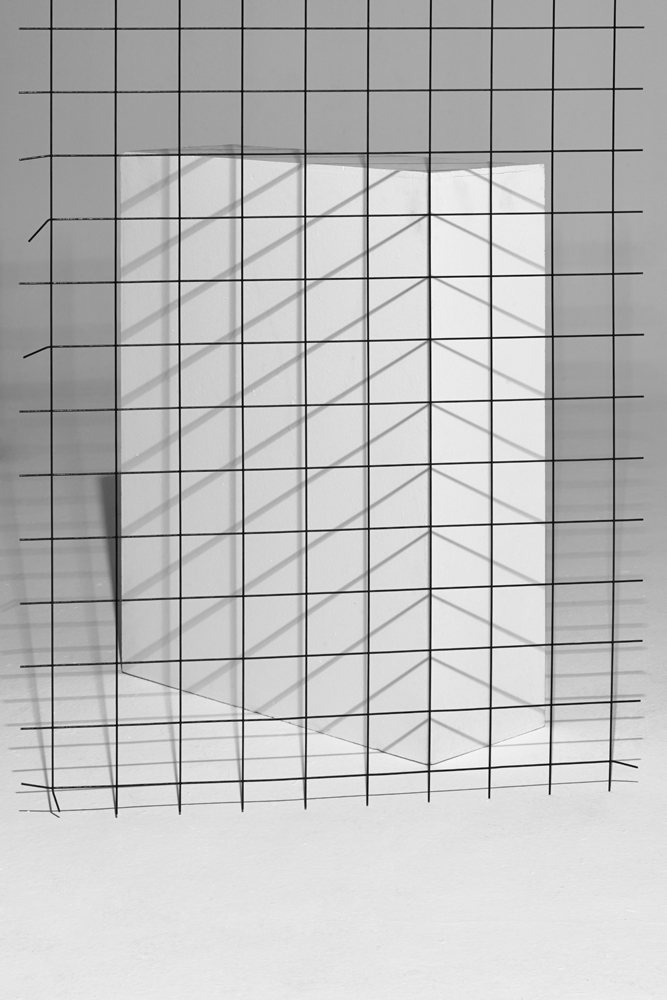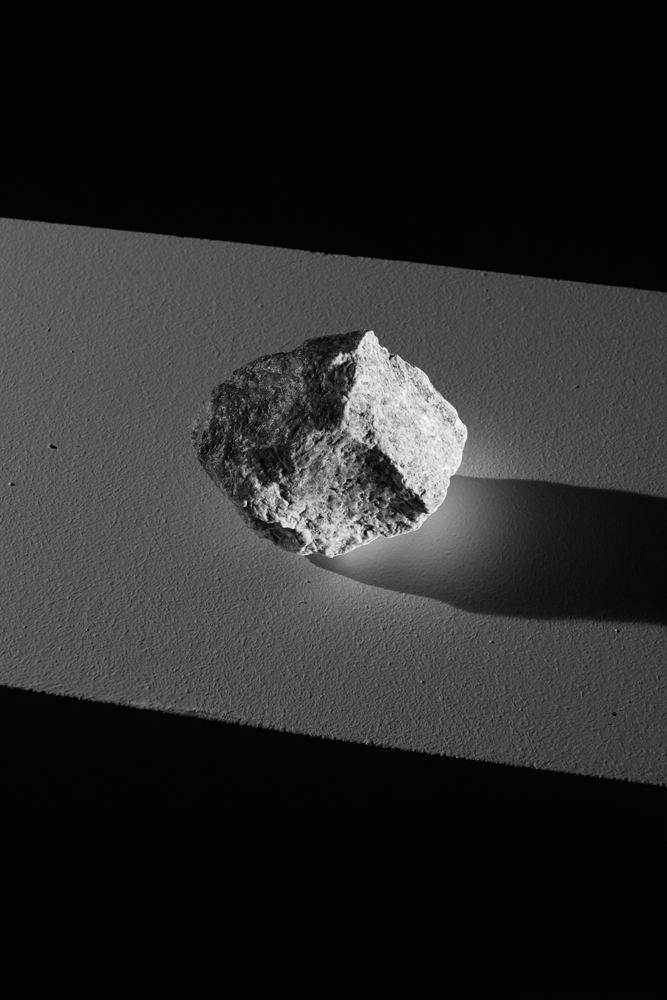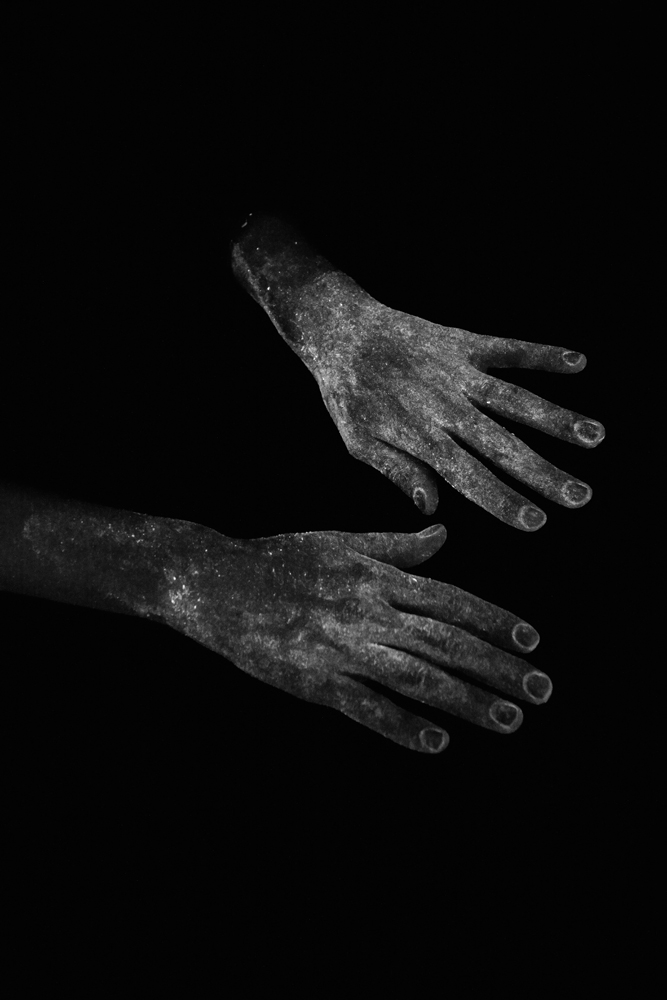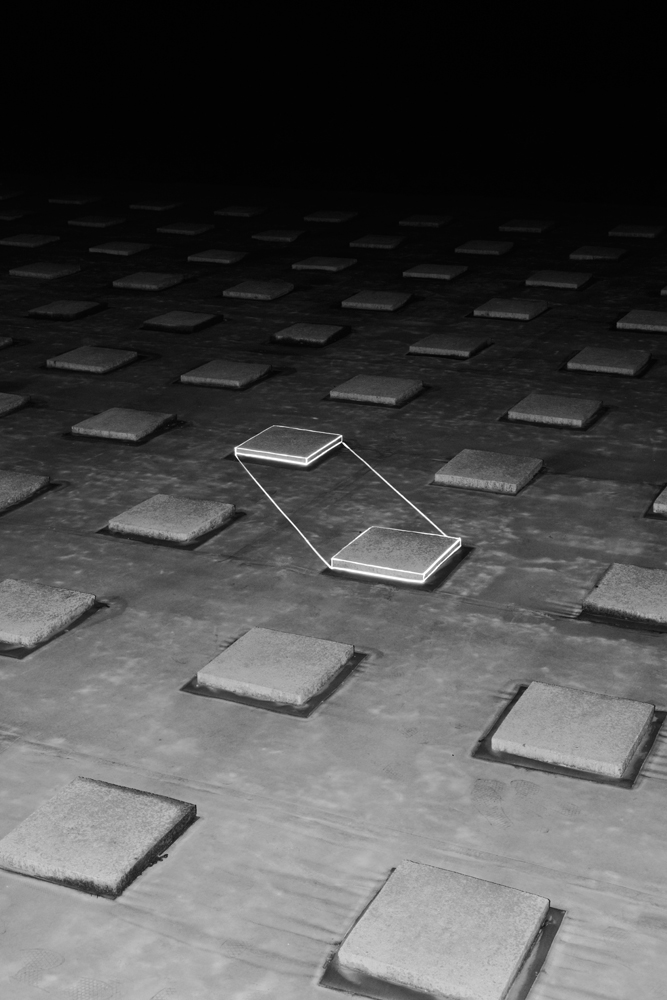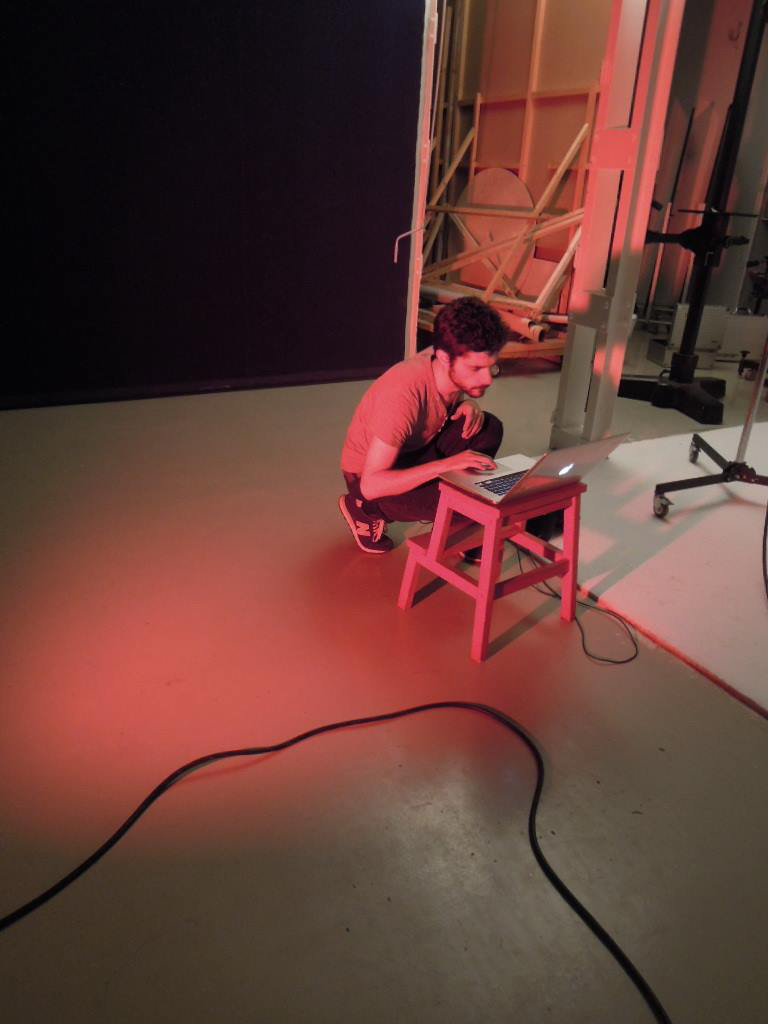Esther Teichmann
Artist Feature
Every week an artist is featured whose single image was published by Der Greif. The Feature shows the image in the original context of the series.
Balázs Máté - Parallax
Jun 24, 2015
Parallax is part of an ongoing project, a perpetual examination of the modus operandi of our perception and interpretation - and an intellectual and visual exploration of the disturbing and the uncanny. The images of the series are conceived to bother our consciousness and question our ability of meaning-making. ìI believe it when I see itî we say. A dictum that in fact presupposes a total confidence in our perception, in our senses and our cognition. While in everyday life we would rarely question ourselves about our perception, photography with its contemplative moments gives us the opportunity to explore a spectrum of possible perspectives, senses and significations. The clichÈs of the series were conceived to subvert the ordinary system of points of reference that defines how we see and comprehend things ñ space, light, forms and figures in the picture. They suggest us that ìsomethingís not okayî. But instead of imposing an ultimate meaning, they invite us on an unconstrained, deliberating discovery.
Artist Blog
The blog of Der Greif is written entirely by the artists who have been invited to doing an Artist-Feature. Every week, we have a different author.
Published in:
»Der Greif #8«
Light study
Jul 01, 2015 - Balázs Máté
href="https://dergreif-online.de/www/wp/wp-content/uploads/2015/07/light-study-balazs-mate.jpg"> Vision is a palpation with the look.
- M. Merleau-Ponty
For my last post I'd like to share a recently made light-study, and I'd like to thank you all for your attention!
See you!
Vision is a palpation with the look.
- M. Merleau-Ponty
For my last post I'd like to share a recently made light-study, and I'd like to thank you all for your attention!
See you!
Evidence directed by Godfrey Reggio
Jun 27, 2015 - Balázs Máté
imeo video_id="17876859" width="1000" height="563“] Today I'm sharing Godfrey Reggio's short movie Evidence, an absorbing and clearly disquieting piece that raises many questions in me about how images work and about defencelessness towards all the visual information that surround us every day. "Evidence looks into the eyes of children watching television – in this case Walt Disney’s »Dumbo«." (Fabrica)
Domesticated Human
Jun 26, 2015 - Balázs Máté
by Edward T. Hall. "He [men] is distinguished from the other animals by virtue of the fact that he has elaborated what I have termed extensions of his organism. By developing his extensions, man has been able to improve or specialize various functions. The computer is an extension of part of the brain, the telephone extends the voice, the wheel extends the legs and feet. Language extends experience in time and space while writing extends language. Man has elaborated his extensions to such a degree that we are apt to forget that his humanness is rooted in his animal nature. The anthropologist Weston La Barre has pointed out that man has shifted evolution from his body to his extensions and in so doing has tremendously accelerated the evolutionary process. [...] In light of what is known of ethology, it may be profitable in the long run if man is viewed as an organism that has elaborated and specialized his extensions to such a degree that they have taken over, and are rapidly replacing, nature. In other words, man has created a new dimension, the cultural dimension, of which proxemics is only a part. The relationship between man and the cultural dimension is one in which both man and his environment participate in molding each other. Man is now in the position of actually creating the total world in which he lives, what the ethologists refer to as his biotope. In creating this world he is actually determining what kind of an organism he will be. This is a frightening thought in view of how very little is known about man." Edward T. Hall: The Hidden Dimension. (1969) Doubleday & Company, Inc., New York
Image making. Every Icon by John F. Simon Jr.
Jun 25, 2015 - Balázs Máté
Hello, my name is Balázs, I am a photographer from Budapest and I will be guest-blogging this week. Many thanks for the opportunity to the team of Der Greif! During my work I find quite oftenly that I'm very much interested in the process itself of how an image is made. Thinking of this, I thought I'd like to start by sharing a deeply thought-provoking conceptual work, Every Icon by John F. Simon, Jr. which he launched on the 14th of January, 1997, at 9:00:00 PM. Simon writes in his Artist Statement: "Can a machine produce every possible image? What are the limits of this kind of automation? Is it possible to practice image making by exploring all of image-space using a computer rather than by recording from the world around us? What does it mean that one may discover visual imagery so detached from "nature"? Every Icon progresses by counting. Starting with an image where every grid element is white, the software displays combinations of black and white elements, proceeding toward an image where every element is black. In contrast to presenting a single image as an intentional sign, Every Icon presents all possibilities." In 1997 Simon's program started to explore all the possible combinations of black and white pixels that could be displayed within the 32 x 32 grid, starting from the top left corner. If we imagine this grid of 1024 pixels as, for instance, the LCD screen of a very early digital camera, we can realize that by time, it will inevitably display a super low-quality black and white image of every moment that has ever happened and not happened in the past, everything that will once happen or what could but will never happen, even everything that is happening right at this moment (me typing this text). Every photograph that was ever taken and all those that will once be taken in the future. However: "... at a rate of 100 icons per second (on a typical desktop computer), it will take only 1.36 years to display all variations of the first line of the grid, the second line takes an exponentially longer 5.85 billion years to complete." - writes Simon in the Artist Statement. Then he adds: "While Every Icon is resolved conceptually, it is unresolvable in practice. In some ways the theoretical possibilities outdistance the time scales of both evolution and imagination. It posits a representational system where computational promise is intricately linked to extraordinary duration and momentary sensation." Check Every Icon here.


